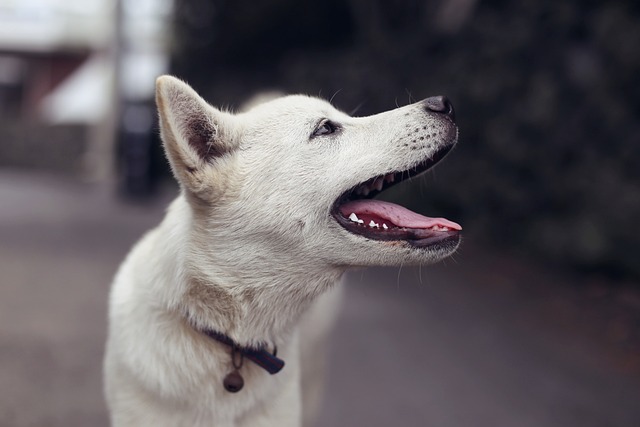Heated dog houses offer a revolutionary solution for pets living in extreme cold climates, providing consistent warmth and comfort through innovative heating systems. These structures address the challenges of wind chill, snowfall, and sub-zero temperatures, ensuring animal welfare and survival. By integrating energy-efficient technologies like solar power and smart thermostats, heated dog houses not only promote pet health but also showcase human adaptability to harsh weather conditions, while minimizing environmental impact. Despite initial costs, these shelters offer significant benefits for pets and owners alike, making them a valuable investment in cold regions.
In the stark contrast of cold climates, the quest for warmth becomes an imperative, not just for comfort but for survival. This article explores ‘Warmth in Cold Climates’, delving into various facets from understanding the unique challenges to the innovative solutions. We examine the critical need for warmth for both animals and humans, introducing the concept of heated dog houses as a starting point. Through technology exploration, design considerations, case studies, environmental impact analysis, cost-benefit assessments, and future innovations, this comprehensive guide illuminates paths towards warmer, more sustainable cold climates.
Understanding Cold Climate Challenges: A Preliminary Look

In cold climates, where freezing temperatures and harsh conditions prevail, creating warmth becomes a significant challenge for both humans and animals alike. This is particularly true for those who reside in remote or rural areas, far from modern conveniences. One innovative solution that has gained traction is the heated dog house. These aren’t just ordinary shelters; they are meticulously designed to provide consistent warmth, comfort, and protection against the elements.
Understanding the unique challenges of cold climates involves considering factors like wind chill, snowfall, and sub-zero temperatures. Traditional homes often struggle to maintain heat in such conditions, making specialized structures necessary for animals—and by extension, humans living in similar environments—to thrive. Heated dog houses address these issues head-on, offering a simple yet effective way to combat the cold, ensuring that pets stay safe, warm, and healthy year-round.
The Need for Warmth: Why It Matters for Animals and Humans Alike

In cold climates, warmth is not just a comfort; it’s a necessity for both humans and animals. Every creature has its own way to adapt to chilly temperatures, but providing warmth is especially crucial for those living in harsh environments. For humans, heated spaces like homes and buildings offer refuge from the cold, ensuring we can maintain our body heat and stay healthy. Similarly, animals require sources of warmth to regulate their internal temperatures, keep their bodies active, and survive the rigors of icy conditions.
Heated dog houses are a perfect example of how we extend this necessity beyond humans. These specially designed structures provide a cozy sanctuary for pets, allowing them to rest comfortably even in subzero temperatures. By offering warmth, we not only enhance their quality of life but also ensure their survival during winter months when cold can be extreme and dangerous. This is particularly important for wildlife and domesticated animals alike, as it enables them to thrive in colder regions and adapt to changing climates.
Heated Dog Houses: A Conceptual Overview

In cold climates, maintaining warmth is a universal challenge, and even our furry friends deserve comfort. This has sparked innovative solutions like heated dog houses. These structures are designed to provide pets with a cozy sanctuary during frigid weather, ensuring they stay warm and happy. Unlike traditional dog houses that rely on insulation alone, heated dog houses incorporate heating elements to create a consistent, comfortable temperature.
This concept offers a practical approach to addressing the specific needs of dogs living in harsh conditions. By regulating the indoor climate, these heated dog houses can prevent hypothermia and cold-related health issues, making them a game-changer for pet owners in colder regions.
Technology Behind Heating Systems: Exploring Options

In cold climates, maintaining warmth can be a significant challenge, but modern technology offers various innovative solutions. One unique approach is the development of heated dog houses. These are designed to provide comfort for pets in freezing temperatures, ensuring they stay warm and safe outdoors. The technology behind these systems often involves advanced heating elements, such as powerful yet energy-efficient heaters, that can be controlled remotely via smartphone apps, allowing pet owners to monitor and adjust the temperature conveniently.
Heated dog houses employ a range of options for optimal warmth, from electric heat pads to more sustainable alternatives like solar-powered heating systems. Electric heat pads are commonly used and provide direct heat to the floor or walls, creating a cozy environment. On the other hand, solar energy harnesses the power of the sun, utilizing solar panels to heat water or air, which can then be circulated throughout the house. This eco-friendly method not only reduces energy consumption but also offers a reliable source of warmth during extended periods of cold weather.
Design Considerations for Efficient Warmth Distribution

In cold climates, efficient warmth distribution is key to creating comfortable living spaces. When designing for areas with harsh winters, considerations should shift beyond simple insulation. A heated dog house, for instance, isn’t just about adding heat sources; it’s about strategic design that ensures consistent and well-distributed warmth. This involves proper insulation placement, ensuring no cold spots form, and integrating heating systems that are both energy-efficient and evenly dispersing.
Windows, walls, and roofs must be carefully insulated to prevent heat loss. Additionally, using radiant heating or smart baseboard heaters can help maintain a uniform temperature throughout the space. For exterior structures like dog houses, consider materials that offer excellent thermal mass properties, allowing them to absorb and retain heat during the day and release it slowly at night. This natural regulation keeps the interior cozy without excessive energy input.
Case Studies: Real-World Examples of Heated Shelters

In cold climates, where temperatures can drop drastically, finding warmth is a constant challenge. One innovative solution that has gained traction in recent years are heated dog houses – but this concept extends far beyond pet comfort. From remote villages to urban areas, real-world examples of heated shelters showcase the power of technology and human ingenuity in mitigating harsh weather conditions.
Take, for instance, indigenous communities living in Arctic regions where traditional homes are not always equipped to withstand sub-zero temperatures. By incorporating heated structures, ranging from modest shelters to fully functional buildings, these communities have improved their quality of life and increased their resilience against the elements. Similarly, in urban settings, heated dog houses have become popular among pet owners, demonstrating that even small-scale applications can have significant impacts on both animals’ well-being and community engagement.
Environmental Impact and Sustainability in Cold Climate Heating

In cold climates, heating solutions are a critical consideration for both comfort and environmental sustainability. While traditional methods often rely on fossil fuels, contributing to greenhouse gas emissions and climate change, innovative approaches like heated dog houses offer a greener alternative. These structures integrate energy-efficient heating systems, utilizing renewable resources such as solar or geothermal energy to maintain warm indoor temperatures without straining the environment.
The design of heated dog houses plays a significant role in minimizing their ecological footprint. Well-insulated walls and roofs, along with smart thermostats, enable efficient heat retention, reducing overall energy consumption. Additionally, these homes can be designed with sustainable materials, such as recycled or locally sourced wood, further promoting environmental stewardship. By adopting eco-friendly heating practices in cold climates, we not only ensure the well-being of our pets but also contribute to a more sustainable future for all.
Cost Analysis: Weighing the Benefits Against Investment

In cold climates, providing warmth is a significant consideration, especially for outdoor spaces and pets. One innovative solution gaining traction is the installation of heated dog houses. While the initial investment may seem steep, a cost-benefit analysis reveals compelling advantages. These structures not only ensure comfort for canine companions but also offer year-round accessibility to outdoor areas, promoting a healthier lifestyle despite seasonal temperature drops.
The return on investment (ROI) of heated dog houses is notable. By preventing hypothermia and related health issues in dogs, pet owners can avoid costly veterinary bills. Moreover, these heated enclosures extend the usable outdoor space, providing an enjoyable environment for both pets and their owners, regardless of the climate. This versatility can enhance overall quality of life and potentially increase property value, making it a smart financial move for dedicated pet owners.
Future Innovations: Looking Ahead to Warmer Cold Climates

As we look ahead, future innovations in climate adaptation will be crucial for creating warmth in cold climates. One promising concept is the development of advanced heating systems tailored for colder regions. Imagine heated dog houses that use efficient, eco-friendly technologies like solar power or geothermal heat to keep both humans and their furry friends cozy during icy winters. These innovative solutions could revolutionize how we interact with and protect ourselves from extreme cold, making cold climates more bearable for all.
Additionally, architectural designs may evolve to incorporate natural insulation and heat retention strategies. Buildings designed with double-glazed windows, energy-efficient materials, and strategic thermal masses could significantly reduce heating costs while providing a comfortable living environment. By embracing these future innovations, we can create warmer, more sustainable spaces in even the coldest of regions.
